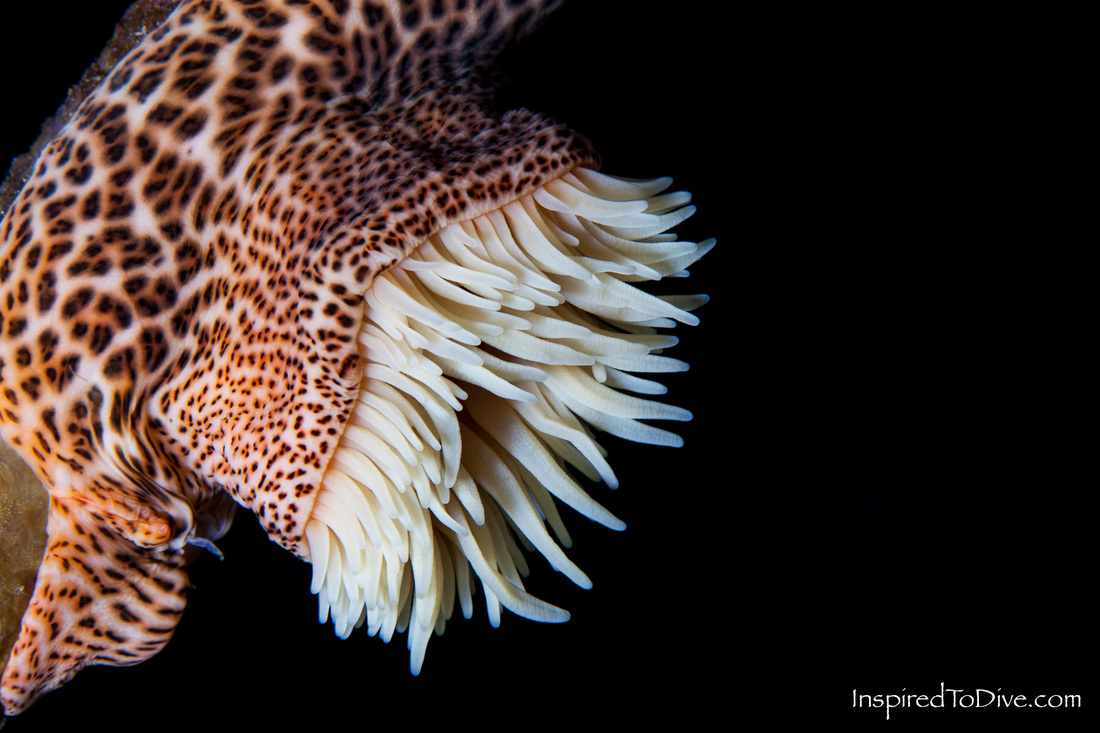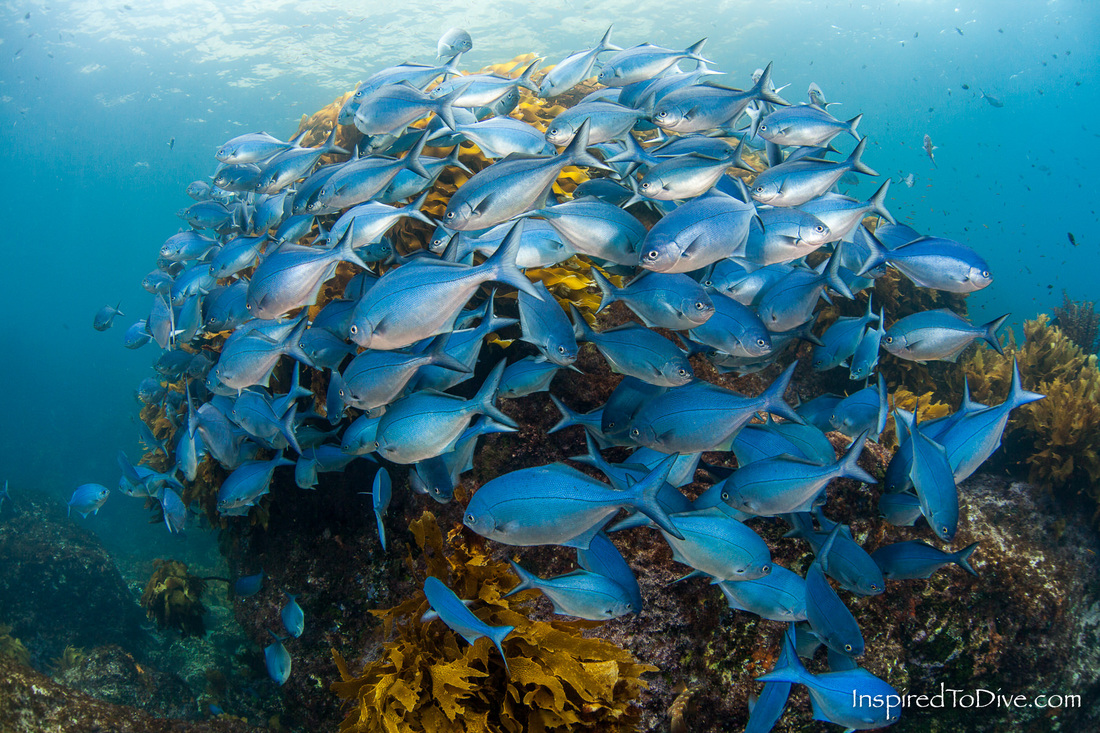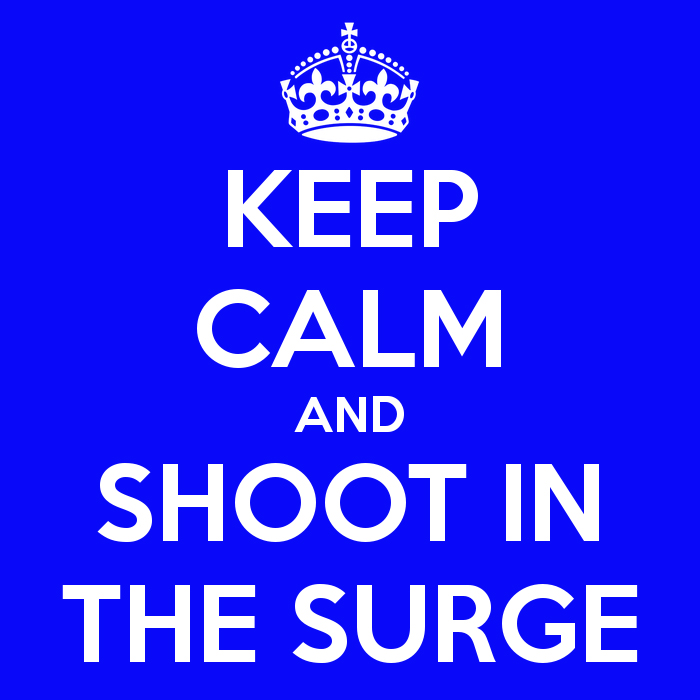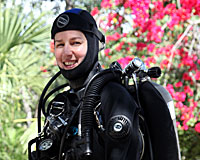A swell is rolling. The sea is a tumultuous mess. You know that the environment for underwater photography is going to be surgy as hell. What techniques can you call on when conditions crap out? Here are the methods I use to shoot great photos in surgy water.
In a perfect world there’s nothing but calm seas, infinite visibility and water of the purest blue hue. Every underwater photo you take is a winner. If you live in that world you are one lucky sod!
The New Zealand that I call home is wonderful, but far from perfect. Sea conditions are widely variable and sometimes borderline undiveable. If I hung out waiting for perfect conditions it would be a long drink between dives. Instead I’ve worked on some ways to cope with the surge and still capture some nice pictures.
Macro or wide angle?
If you’re shooting with a camera that has interchangeable lenses then you’ve got a decision to make: macro or wide angle? This is a tough one. No matter what you choose it will feel wrong the second you splash into the water. Make a call and make it work.
In my experience surgy conditions generally cause a reduction in visibility. All that thrashing water stirs up sediment and fills the water column with particles. It’s a backscatter nightmare. For this reason I lean away from wide angle towards macro.
Say you pick macro - imagine trying to photograph a button in a washing machine. Shooting small subjects in surgy conditions is enough to make any hardy underwater photographer sob with frustration. I guess you’d say I like a challenge.
Location, location, location
Start popping those seasick tablets like they’re party pills – you’re heading offshore. Reefs and islands accessible by boat will have better visibility than shallow beach-access sites where the sandy bottom is stirred up.
On a typical photographic dive in good conditions I look for an interesting subject or scene and set out to capture it. Surgy conditions demand an alternative approach. I try to find a good location in which to shoot, and then search for an interesting subject within it to focus my efforts on. I may spend the majority of my dive in this one location.
What makes a good spot? Look for a sheltered site where you can get out of the worst of the wash. A wall that is free of overhang (head and valve-bashing obstacles) with good space so that you can be swept side to side without being impaled is a good place to start. Allow generous space behind for your fins to move - never have they been more important stabilisers than in surgy conditions.
The New Zealand that I call home is wonderful, but far from perfect. Sea conditions are widely variable and sometimes borderline undiveable. If I hung out waiting for perfect conditions it would be a long drink between dives. Instead I’ve worked on some ways to cope with the surge and still capture some nice pictures.
Macro or wide angle?
If you’re shooting with a camera that has interchangeable lenses then you’ve got a decision to make: macro or wide angle? This is a tough one. No matter what you choose it will feel wrong the second you splash into the water. Make a call and make it work.
In my experience surgy conditions generally cause a reduction in visibility. All that thrashing water stirs up sediment and fills the water column with particles. It’s a backscatter nightmare. For this reason I lean away from wide angle towards macro.
Say you pick macro - imagine trying to photograph a button in a washing machine. Shooting small subjects in surgy conditions is enough to make any hardy underwater photographer sob with frustration. I guess you’d say I like a challenge.
Location, location, location
Start popping those seasick tablets like they’re party pills – you’re heading offshore. Reefs and islands accessible by boat will have better visibility than shallow beach-access sites where the sandy bottom is stirred up.
On a typical photographic dive in good conditions I look for an interesting subject or scene and set out to capture it. Surgy conditions demand an alternative approach. I try to find a good location in which to shoot, and then search for an interesting subject within it to focus my efforts on. I may spend the majority of my dive in this one location.
What makes a good spot? Look for a sheltered site where you can get out of the worst of the wash. A wall that is free of overhang (head and valve-bashing obstacles) with good space so that you can be swept side to side without being impaled is a good place to start. Allow generous space behind for your fins to move - never have they been more important stabilisers than in surgy conditions.
You're underwater ready to take photos, now what?
- Take a couple of minutes to evaluate the motion of the ocean. Are you being propelled up and down, side to side, forwards and back, or a combination? Surfers learn to read waves. Scuba divers can get a feel for the swell on any given day. Wait for momentary lapses in water movement to fire off your shot. Be ready for the extra big lift that sweeps you off balance.
- Look for potential hazards that you may be emphatically tossed upon: rock, reef, spiny urchins, and camouflaged scorpionfish. Avoid those.
- Shoot at arm’s length. If you find yourself suddenly propelled forward you have a little extra room to prevent impact. Yank your arms in and hug your camera to your chest. Protect your ports.
- Dive with slightly negative buoyancy. Break horizontal trim to roughly thirty-five degrees. Use a gentle upwards kick to hold position against vertical water movement.
- Don’t forget you’re negatively buoyant. As soon as you pull back and pause to review your photos you will start to descend - don’t get so caught up in reviewing images that you don’t notice. Keep the reef in your peripheral vision and pay attention to any increasing pressure on your ears. Add a couple of quick bursts of gas to your BC to regain neutral buoyancy.
- Consider diving deeper and shoot below the swell. Conditions at 5 metres might be yuck, conditions at 15 metres average, conditions at 25 metres better. Be prepared to adjust your gases and tank capacity to accommodate such a choice. Will you be comfortable holding decompression stops?
- Be flexible with composition. It’s tricky to get your elements lined up just right when you’re flying past your subject. Now is a good time to get creative.
- Fighting surge is exhausting. Check your pressure gauge more often if your breathing rate is up. Going with the water rather than fighting it is more comfortable for prolonged shooting.
- A stem of kelp may seem like a great handle to hold you in position but if you try to fight the movement of the water in this way rather than go with it you can risk being flipped over.
- Frustration is finding a great little subject to photograph and then losing it as you’re swept a couple of metres away when a wave passes through. Memorise larger recognisable features around your subject to orientate you in the right spot to relocate it over and over again.
- Be patient. The 5 minutes you may need to spend with a subject in good conditions can easily become 25 minutes in bad. Keep calm. Take your time. Review your images. Have you got a shot in focus?
- A solid back kick is an essential skill. The ability to move in all directions using your fins leaves your hands free to stabilise your camera and fire off the shot at the critical moment.
- It’s nerve wracking placing your expensive underwater camera close to damaging elements when you’re at the mercy of a big sea. But if you don’t get close you won’t get a good image.
- Average conditions are no excuse for average skills. No touching is good practice regardless of the situation. Treat the underwater environment with respect.
Unless you live in a perfect world then a good chunk of every year is likely to be spent diving in average situations. While you may not create an award-winning photograph in surgy conditions, this is guaranteed if you stay at home. It is possible to take interesting underwater photographs in the surge if you’re prepared to work at it. Learn to adapt, experiment and above all have fun.
The images in this article were taken in sloppy seas with some serious surge.
What techniques do you have for shooting in surgy conditions? Share your ideas in the comments below.
The images in this article were taken in sloppy seas with some serious surge.
What techniques do you have for shooting in surgy conditions? Share your ideas in the comments below.





 RSS Feed
RSS Feed

